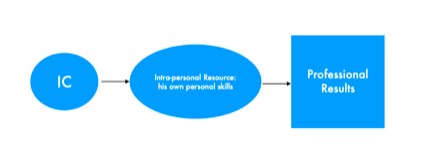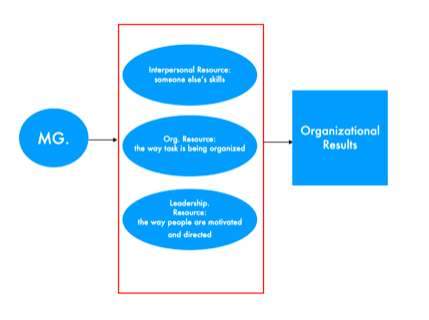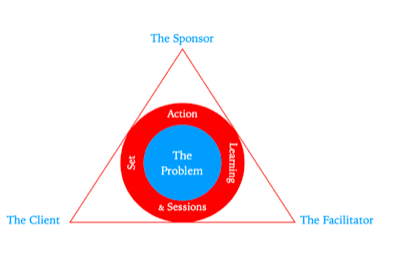Management in the end is trying to convert resources into results.
One of the biggest challenges any fast-growing company must face with is the shortage of good managers. The good managers are not likely to be hired straight off the market, because as what marginal principle already predicts that best managers (ones that are both professional and well-trained fit for your business) are already occupied. Therefore most companies on a fast track to development have to first promote and then develop their own people into managerial positions. But there is a problem that most fast-growing tech company must face, namely how to develop their majority of technical ICs into managerial positions and make sure they create the value managers are supposed to( not tech ICs with managerial titles).
This is easier said than done. For one thing, there have always been the misunderstanding of what "managers"are supposed to do, instead of vanity brought by the fancy title. To answer that question effectively we have to uncover the underlying false premise that management is power endowed with the title. In fact, management is anything but.
Management is about converting resources into results, and doing so through organizing people in a both scientific and human way, and the results should be consistent.
However, one often seriously underestimate the challenging nature of it for a former tech IC to complete the transformation to an effective manager. It is so tough because a new tile of “ XYZ Manager” plus a simple communication crash course simply won’t cover the full scope a challenges a manager must face in actual work.
Let’s examine the significant differences between being IC and a manager.
First of all, they both involve some level of management in a sense no matter if you’re an IC or a manager you have to convert resources into results. However, the key difference is the nature of “resource”. When working as an IC, you simply trying to convert the resource largely under your direct control—-your own personal skills into results (see figure-1.1). I call this type of resource Intra-personal Resource and the results converted Professional Results.

Now look at what happens when promoted to managerial positions. All of sudden, the former ICs found themselves in a position where they have to try to convert not only their own intra-personal renounce, but more importantly, other three types of resources—-Interpersonal Resources, Organizational Resources and Leadership Resources into not Professional Results, but Organizational Results(see figure-1.2). This is a whole new game! Instead of thinking about to hone their own personal tech skills (Intra-personal Resource) , they have to think about:

how to discover and leverage someone else’s skills (Interpersonal Resource)
how to organized tasks in a most efficient way possible (Organizational Resource)
how to motivate and direct people reporting to them (Leadership Resource)
By converting all these types of resources into organizational results effectively managers are creating the type of value much more profound for the business organization. Hence, fast-growing companies need good managers.
Nonetheless, the reality is often grim, especially for tech ICs promoted to managers. The organizational results are NOT merely the sum of the parts, but a synergized result. That means you have to make sure all three types of resources plus your own intra-personal sources are working together, not demolishing each other. Trained as IC already, the new managers constantly find themselves in conflict of maintaining own personal tech skills and being busy“managing” others. Without mastery of management skills, and more importantly without a management mindset to begin with, they are torn between being an great IC( often the reason why they got promoted to managers) and acting as a manager(often ends up in either micro-management or doing everything ally himself). The result? Mediocrity at both ends.
Fast-growing companies need to cultivate a scientific management culture, one that fosters good managers and helps newly promoted managers to truly fulfill their roles by smoothly completing their transitions.
Solution Part-1 Action Learning Setups
Action learning is a proven tool for realizing individual and organizational change .
It combines knowledge that people have been taught with skills that people have learned, often from experience.
Action learning requires a supportive environment in which to thrive. Once established, it provides a valuable and powerful stimulus for continuous change, enabling organizations to grow and learn dynamically, rather than remaining static or fixed in one set of circumstances or perspectives.
L = P + Q
P- Programmed Knowledge: things that people have been taught or that they have learned through experience
Subject training sessions:
"Emotional Intelligence: Finding Strength in Self & Others" (addressing Interpersonal Resource)
"Team/Group Effectiveness: More than SMART" (addressing Organizational Resource)
"Structural Influence: Effective Motivation for Managers "(addressing Leadership Resource)
Q-Questioning Skills: the ability/willingness to challenge programmed knowledge using the stimulus or real life problems.
Group Action Learning Sessions (Action Learning Sets):
Monthly group Action Learning sessions, two sessions per group, 2 hours per session, aiming at the problem related to empathically discover team members strengths and self-awareness for strengths and weaknesses.
Monthly group Action Learning sessions, two sessions per group, 2 hours per session, aiming at the problem related to organizing team efforts and communication effectiveness.
Monthly group Action Learning sessions, two sessions per group, 2 hours per session, aiming at the problem related to team member & staff motivation
Solution Part-2 Action Learning as Continuous Improvement
The action learning approach creates learning opportunities through which people develop by:
working on "life" problems
being empowered to question what is happening
trying out suggested solution (doing things differently)
stepping back and reflecting on what is happening and why
sharing the experience with others who are also learning by doing
While all those above can take place during action learning, for this particular case, we focus on the three that are underlined, simply because the participants are first given structural knowledge (in subject training sessions) as to what management is before trying out suggested solution regarding their pains in managing teams. Gradually, during the action learning sets (action learning sessions), they’re encouraged to share the experience of trying out solutions with others while stepping back and reflecting on what is happening and why. Thus, the whole experience itself is the learning.

R&Rs in Action Learning
For Action Learning to work properly, that is to produce the results desired and designed while taking root in the organization so continuous improvement is possible, we need the following roles and setups in place (see figure 2.1 )
The problem. This provides the focus for the activity. It is the individual or team problem (project). In our particular case it’s highly like to be an individual problem.
The client. It is the person who owns the problem, someone who knows, cares, and above all can implement its solution if wish so. In our particular case it can be the direct report managers of the participants.
The action learning set. This is the place where participants meet to share their experience. It is the core of the program—the questioning, confrontation, challenging and support which takes place in the set provides the encouragement and stimulus for individuals/groups to carry on.In our particular case this is the planned Group Action Learning Sessions.
The facilitator encourages learning through questioning, mirroring, challenging, and supporting. The facilitator is the grit in the oyster which creates the learning pearl.
The sponsor is the senior manager responsible for the program.In our particular case this can be the top leader of R&D or regional leader of R&D.